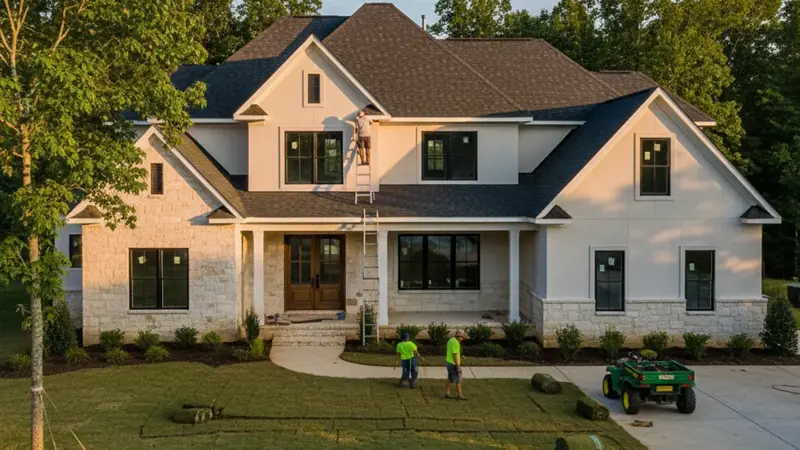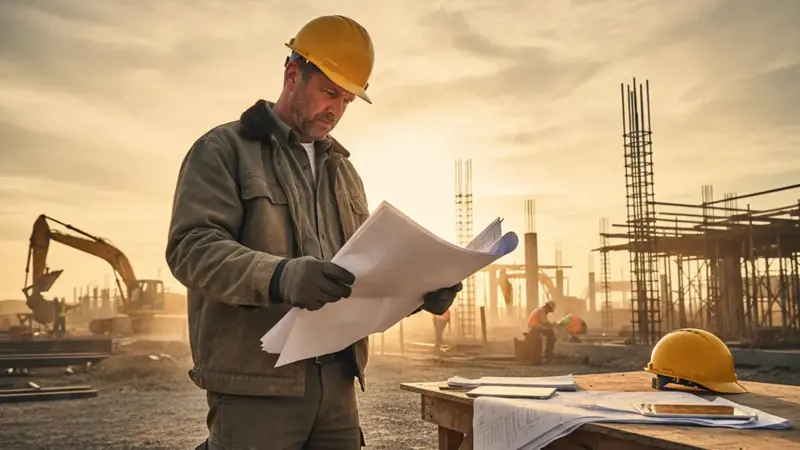The construction industry is finally beginning to see a resurgence after years of struggle.
With rising construction costs and labor shortages persisting, most contractors are starting to get creative with new ideas. Even though these circumstances still present tough challenges.
And as if it wasn't hard enough already, the government made stricter regulations along with higher margins for error add up to more pressure than ever before.
Since the COVID-19 epidemic, construction has been forced to adapt to new changes, from scheduling and completing projects to hiring workers and meeting with clients for over a year.
New technologies continue to change modern-day construction sites - improving both the abilities and profit.
Construction trends and movements are changing the roles of professionals and frontline workers in the construction industry.
When we look forward to what will happen in this industry in the coming months, some things will likely change due to the effects of this pandemic.
Looking forward, these are the 7 most crucial construction trends of 2022. Keep reading to learn more!
1- Smart and Sustainable Cities!
Today, many of the most successful and technologically advanced companies invest in megaprojects that create smarter, sustainable cities worldwide.
Smart cities will be more intricate and interconnected than before, requiring an extreme amount of planning and development before construction even begins.
By 2025, the global project market is set to grow at 20.5%. This means they're worth 2.5 trillion dollars worldwide, equating to approximately one-fifth of China's GDP last year ($11 trillion).
As more smart cities come into being, the nature of construction projects will change.
Pedestrian sensors and WiFi-connected lightbulbs are just two ways these new urban environments demand an increase in technical know-how from contractors.
Early investment in skills training can benefit individuals looking to establish themselves within the construction industry as smart cities gradually become the standard for urban development.
The most important thing to understand in 2022 is to evaluate the skills needed for smart city development while planning accordingly and preparing for this new way of building cities.
2- Continous Labor Shortage!
Increasing demand for laborers is one of the biggest construction trends of 2022.
With quality labor being both expensive and competitive, it's important to look at other options besides living human beings - including robotics which is capable of picking up some slack when it comes to work done by people.
Regardless of the modern machines' tireless endeavors, we'll need more educated workers to manage and interpret the data produced by new technology.
According to the Bureau of Labor Statistics, female employees occupy nearly 11% of construction industry jobs.
Fortunately, women are filling these positions once occupied exclusively by men. The current labor shortage in the construction industry is expected to continue in 2022.
Therefore, builders must invest in careful training and development to give workers the skills they need to succeed.
Tools such as new state-of-the-art technologies that can appeal to the tech-savvy generation of workers are a must. When it comes to compensation, higher wages keep employees productive and satisfied.
In light of this, it would behoove businesses to develop strategies to retain the best talent and move digital operations forward and overcome its construction trend so they can free up all that precious time spent on administration for themselves.
3- Automation with Technology!
Automation with technology is one of the growing trends in the construction trends that promise to increase efficiency on construction sites. Self-driving vehicles and drones carrying out repetitive tasks will help speed up the building process, improving productivity and accuracy. Because automation leaves workers free to do specialized jobs while drones and robots do tedious work, there are fewer complications or mistakes.
Additionally, more people are turning to digital solutions for construction companies—from implementation to reporting.
Integrated all-in-one software tailored specifically for the industry gives company owners and directors real-time data and reports to make better-informed decisions about managing resources, controlling costs, and maximizing margins.
This allows them to take project control far beyond basic cost overrun calculations or construction delays. Estimating software has begun to gain more importance in the construction industry. With a one-stop solution, these business leaders can have complete visibility of their projects, projected completion time frame, and projected profit margin. With the rise of digital solutions increasing exponentially, the need for an all-inclusive solution like 247PRO will grow by 2022.
4- Increased Safety Measures!
Safety is a significant concern in construction and one of the most important construction trends, where 21% of workplace fatalities occur yearly.
In 2018 alone, according to the U.S. Department of Labour, 1,008 construction workers lost their lives due to falls, objects striking them; electrocution; and getting caught in or between hazards.
Also, COVID-19 has significantly impacted the construction industry, impacting site rules and project timelines.
Site guidelines are now stricter thanks to updated state regulations emphasizing cleanliness and strict safety protocols—including increased union influence in projects, which may add costs or deadlines to the timeline.
As a new trend in construction technology, work sites are safer by utilizing wearables and internet of things (IoT) devices that measure the worker's biometric conditions and surroundings.
If someone falls, these advanced gadgets will alert management of the person's location through an application.
5- Green Building and Sustainability!
Green construction is finally becoming the norm rather than an expectation. Green construction encompasses using environmentally-friendly materials and reduced energy consumption to create a place that supports sustainability.
This includes sustainability and eco-friendly renovations, but unfortunately, these upgrades are still considered luxuries for many people - though they won't stay that way for long.
Ecotech or green construction trends will soon go mainstream because they will be less expensive in the long run. According to the U.S. Energy Information Administration, renewable energies captured 11% of the U.S. energy market in 2019 and are only expected to grow as accessibility becomes easier.
Renewables are a significant piece of the pie, given that buildings are responsible for 40% of all U.S. energy consumption and 30% of its greenhouse gas emissions.
And while it may be appealing to do so simply because it will benefit the planet, research has shown that green buildings also benefit those who work or live inside them.
6- New Construction Methods!
The U.S. Bureau of Labor Statistics announced that the Producer Price Index for construction goods had gone up by 17% from last year, which signals a new and increasing trend in prices.
Rising interest rates are likely to compound all costs, leading to an increase in total construction costs.
However, technologies such as drone augmented reality (A.R.), and building information modeling (BIM) will be vital in maintaining project volumes while combating these rising pressures.
New materials like rubberized asphalt or aluminum slag may prove fruitful in the future but come at a price; some say this premium could go beyond 20%.
In response to the need to maximize profit and sustainability, construction companies must reduce building material costs and find cost-effective, sustainable building materials like Self-healing concrete, transparent aluminum, light-generating concrete, 3D graphene, and invisible solar cells.
7- Modular and Prefabricated Construction!
An unprecedented boom in modular and prefabricated buildings shows no sign of relenting.
The modular construction market, led by the residential sector, is predicted to balloon to almost $110 billion by 2025 due to a lack of skilled labor and an increase in cost-cutting technology.
In addition to being faster and less costly, new technology has allowed buildings to grow higher.
Many large-scale builders plan on reducing their work hours by only building off-site - hoping that by 2025 they will only do so at 25%.
Off-site construction has not been spared by the COVID-19 pandemic, with some manufacturers shutting down to address the shortage in large-scale, hospitality-focused modular construction.
However, as a whole, off-site construction isn't going anywhere.
Modular projects can regulate employee safety better and create safer work conditions—making them ideal for those who want to maintain social distancing practices.
Conclusion:
Construction is changing quickly, and architects and builders must keep up with popular trends to stay competitive.
These key trends in the construction industry highlight the important role technology will play in the construction industry's future.
Though we may not be able to predict exactly how these trends will play out over time, there are some ways to prepare for their arrival.
With appropriate software, you'll be able to work smarter - providing clients with what they want while keeping yourself competitive within this ever-changing industry.
With an estimator like 247PRO by your side, you can instantly create accurate pricing estimates for jobs at a click of a button.
This software helps you break down every part of a project into its most basic components to know precisely what it will cost before giving a price quote.
The estimator helps you adjust your overhead costs, profit margins, and labor costs. So, now you can plan accordingly with reliable information that considers all your hard work!
No need to waste time guessing - use this tool to accurately predict final prices without worrying about getting it wrong again.


